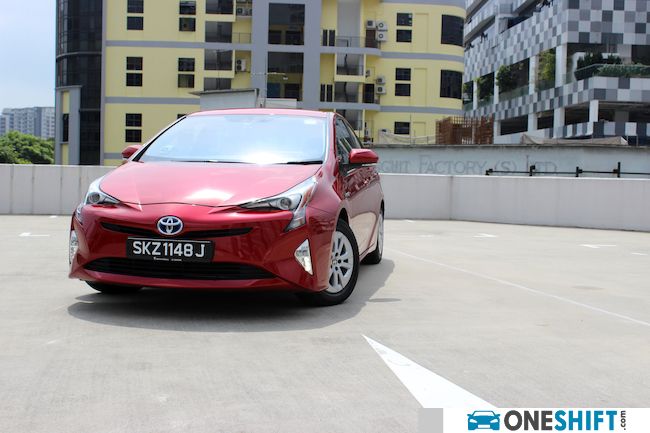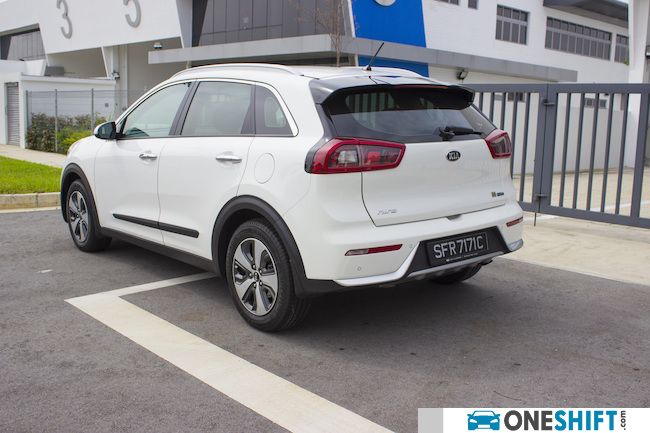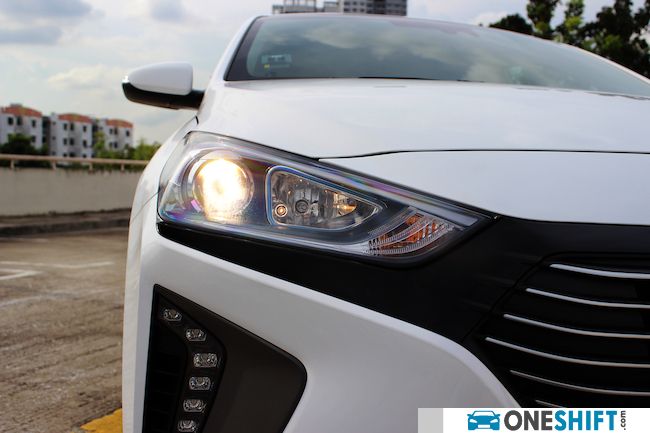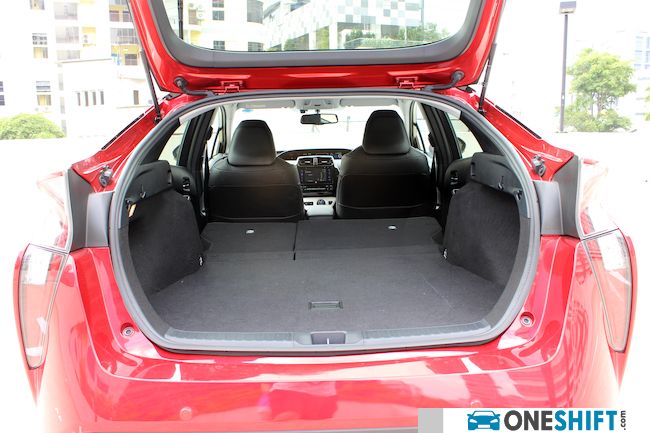Fuel Savers - The Essential Guide to Which One is The Best
The Toyota Prius has always been seen as the benchmark to follow or even beat, when it comes to building a Hybrid Car. So entrenched is the Prius in current-day culture that it is often referenced as the butt of jokes. Brian the family dog from adult cartoon, Family Guy also drives one. But what may be seen as a soulless econo box to some, has proven time and again that the fuel-sipping and additional range providing merits has turned the humble compact hybrid car into almost a mainstay in most developed countries.

The Toyota Prius has always been seen as the benchmark to follow or even beat, when it comes to building a Hybrid Car.
So entrenched is the Prius in current-day culture that it is often referenced as the butt of jokes. Brian the family dog from adult cartoon, Family Guy also drives one.

But what may be seen as a soulless econo box to some, has proven time and again that the fuel-sipping and additional range providing merits has turned the humble compact hybrid car into almost a mainstay in most developed countries.
Jumping onto this same bandwagon, are two sister Korean entries, the Hyundai Ioniq and Kia Niro, which would no-doubt give the more costly Prius a run for its money. But are they any good, versus the unofficial industry benchmark?

For starters, all three cars have a wheelbase of 2,700mm, but the similarities do really stop there, apart from somewhat similar fastback styling seen on both the Hyundai and the Prius.

At first glance, the Prius does seem to have a little less kit, as compared to its Korean competition. You do get a set of 15” rims covered by wheel caps. Both the Hyundai and Kia have alloys, with the Kia on 16” units, and the Hyundai going one size larger at 17”, with some fancy bits of wind-cheating plastic trim on them. The Prius actually has quite a decent set of alloys hidden away, but that would involve you removing the wind-cheating wheel caps. Really, they should have produced fancy alloys from the beginning.

The Prius and Ioniq share very similar design elements at the rear. Both cars have split rear windshields, although the Toyota does benefit from a rear wiper. The Kia on the other hand, had opted for a completely different path, by taking design cues from current SUV design, and they have built what we could term as a Crossover, and a well-designed one I should say. With plastic wheel arch protectors to protect the car from any debris as you take the Niro off the beaten path…. Ok forget I said that. Under all that fuss, this is still as vanilla a hatch as the Prius and Ioniq. Frontal styling for the Kia carries on it the signature “Tiger Nose” design, and there is quite a bit of healthy black accenting on the car.

The Prius gets very radically styled headlamps, which eat downward into the front bumper, while the bonnet is sculpted to give the car an awkward angry in the eyes look, yet flashing an awkward smile under its Toyota Logo-ed snout.
The Ioniq on the other hand sports a large horizontal front grille, which carries the company logo and the placing for its licence plate.
Among the three cars, the Ioniq does look the neatest, and sportiest. Partially thanks to its larger 17” rims which fill up the wheel arches.

The interiors of the three cars are in essence very different. The Prius carries the least uncluttered dash among the three cars, the instrument binnacle does have some resemblance to what you may find in say their Previa MPV, with the display spanning toward the middle of the dash. But being uncluttered on top is one, the entire centre console is white and very empty. Almost reminiscent of the fibreglass seats you would find in one of those rides you get at the fun fair. The gearshift lever comes in the form of what I could best describe looks like a plastic blue rosebud planted onto the dash itself.

The Niro and Ioniq on the other hand sport more conventional designs, with the Hyundai having a slightly more serious (and better) looking dash, and sports more conventional dials in the instrument binnacle. The Kia’s display does come across as a little more sci-fi.

Both Korean cars come equipped with a wireless mobile device charging pad for charging any QI enabled device. Additionally, the front seats for both cars feature coolers and warmers. More points there for the Koreans. The Prius on the other hand comes equipped with just a set of seat warmers in front, in case you feel chilly in our tropical conditions. Very nice touch…

While all three cars do sit on the same-sized wheelbase, somehow, the Prius seems to provide more interior room at first glance, perhaps thanks to the amount of glass used, making the interior brighter.
Cargo space is decent for all three cars, with the Hyundai offering 443 litres, the Niro faring slightly worse with 427 litres and the Prius taking the prize with 502 litres. Unlike the two clone cars from different mothers, the Niro’s rear seats do lot leave a flat loading area, when folded down.


The cargo covers on the Prius and Niro do prove to be a cumbersome bit of kit, as there are no proper rails for the pegs on the cover to slide against, meaning that hooking the cover to hide your stuff could be a difficult task with users trying to get both the left and right peg into the slot. The Ioniq on the other hand has the same boot format as the other two cars, but have included a set of rails, moulded into the plastic trim for it to slide into the catches. The system may not be that perfect though, as at times, the pegs do come right out.

The Prius is powered by a 1.8 litre unit, mated to a CVT transmission. Among the three cars, it is the only one which is able to be driven in full EV mode, with a switch of the selector. Imagine starting the car silently in this mode, and creeping out of the carpark in near-total silence… sneaky sneaky…

The Hyundai and Kia on the other hand utilise the same 1.6 litre Kappa engine, mated to a dual clutch gearbox, which I feel, offers slightly better response, as compared to the CVT in the Toyota.

Sadly though, the 200cc deficit does show in the Korean cars, and even with both engine and hybrid drive systems pushing the cars, they tend to feel rather sluggish. The Prius’s 1.8 and transmission combo also has smoother delivery, apart from its 15bhp advantage.
In terms of ride comfort, where all three cars are able to eat up the miles, the Prius does win in this department, followed by the Ioniq and then the Niro. Suspension dampening is very good, and the car does skip a little less over uneven roads than the Korean makes.

However when cornering, we found that the Ioniq did suffer from plenty of chassis flex around the bends, and both Korean cars could have a little more grunt when exiting corners. Strangely though, even as sister cars, the Hyundai does suffer from lack of brake boosting (while the Kia’s brakes are pretty good), and you may find the car in-front of you getting larger too quickly when applying the brakes.

But what sits high in the order of buying a hybrid car? It really is the fuel efficiency. The Kia takes the real points here, with 26.3 km/l, the Ioniq with a close 25.6km/l and due to the larger engine, the Prius consumes a little more at 18.5km/l.

If you are looking at this from a pure consumption standpoint, the Korean cars do make more sense. The added creature spoils also help make them very attractive cars for the hybrid buyer. But the overall better drivability, and refinement of the Prius, does make the Japanese car a very narrow winner in this three-way fight.
Read more about the Toyota Prius here.
Read more about the Hyundai Ioniq here.
Read more about the Kia Niro here.
Credits:


Get the Best Price for your used car
from 500+ dealers in 24 hours

- Convenient and Hassle-Free
- Consumer Protection
Transparent Process
With No Obligation








